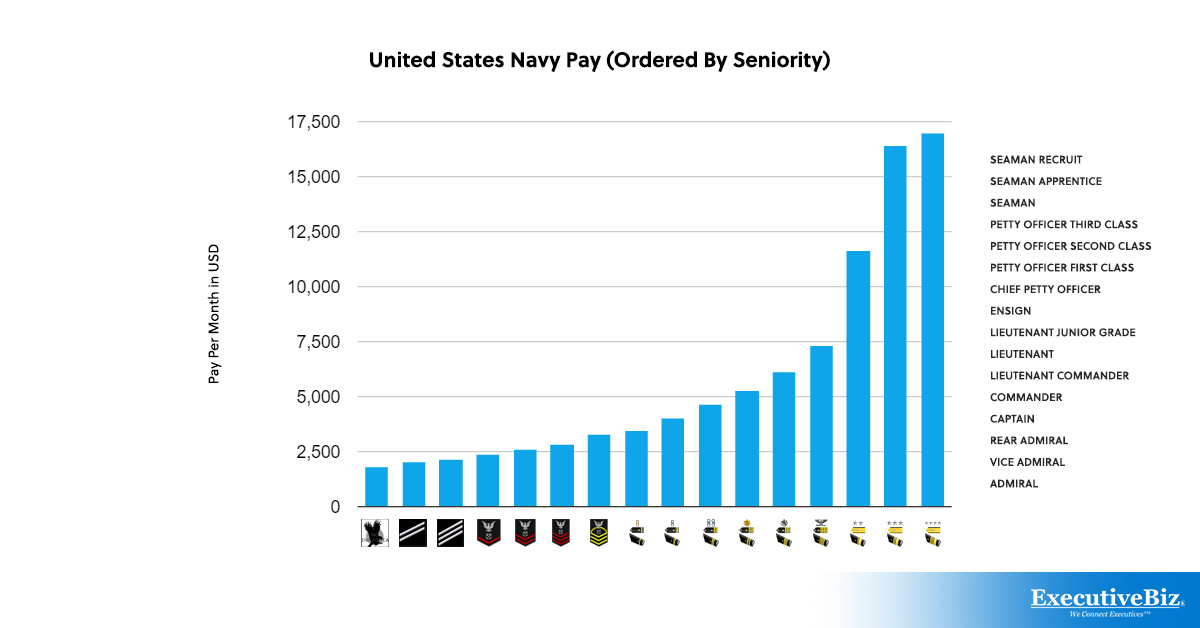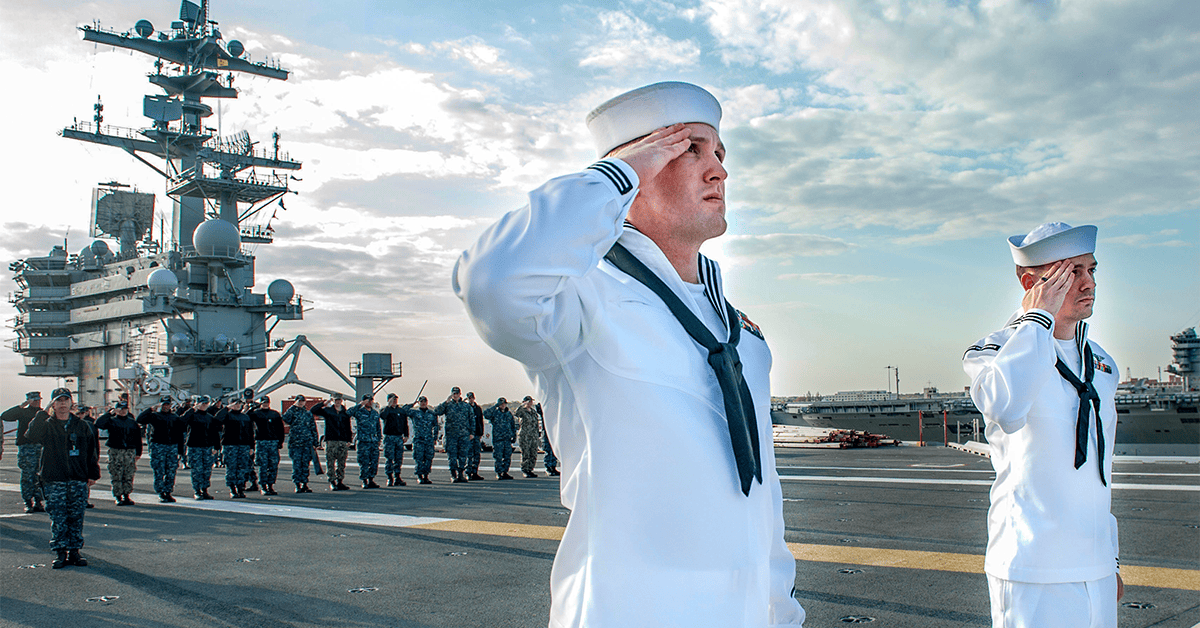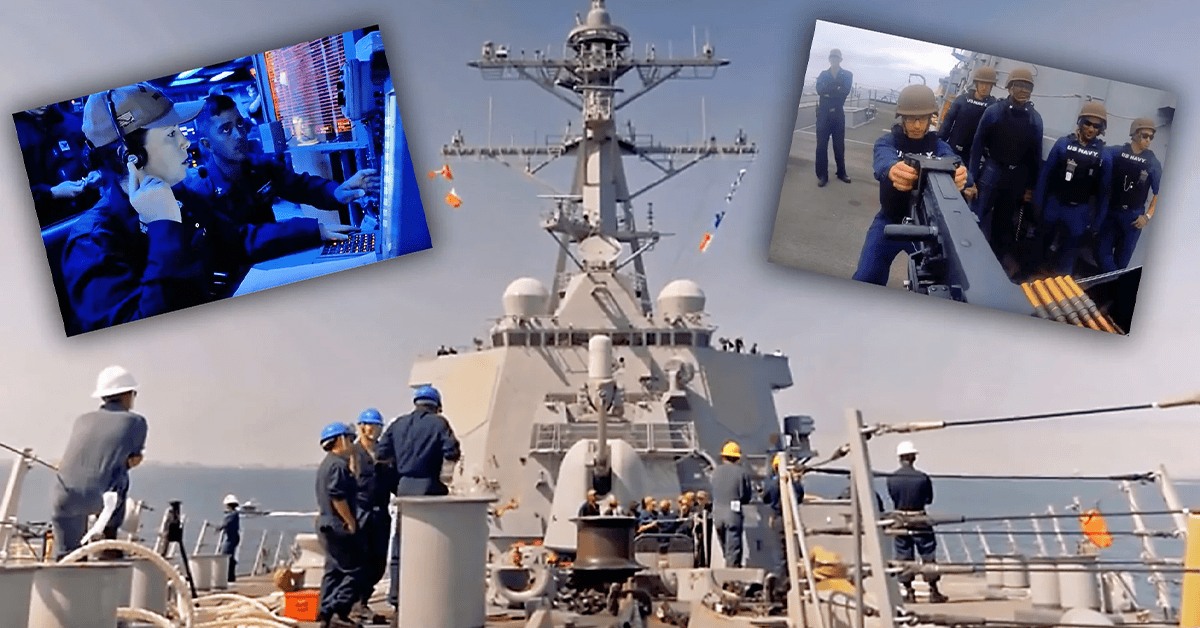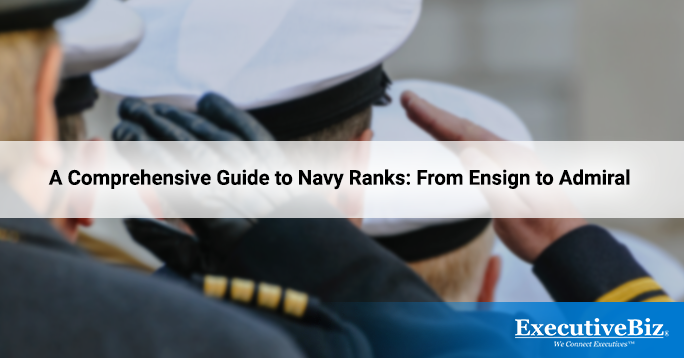The upcoming 2024 Annual Navy Summit will happen in Aug 2024. Naval leaders and expert innovators from both government and private sectors will be discussing enhancing maritime security and other technological advancements. Don’t miss this out by registering ahead to get an early bird perk or a discount.
Understanding Navy ranks is crucial not only to navigate the structure but also to comprehend how authority flows within the organization.
With this guide, you’ll gain insights into the different responsibilities and expectations that come with each rank, allowing you to appreciate the dedication and commitment required to climb the ranks of the Navy.
Embark on this comprehensive journey through the Navy ranks, and unlock a deeper understanding of this esteemed military institution.
Navy ranks: Structure and insignia
The Navy’s rank structure is visually represented through insignia worn on uniforms. These insignia vary depending on the rank and are designed to indicate the level of authority and responsibility held by an individual.
Enlisted personnel wear rank insignia on their sleeves or collars, while officers wear insignia on their shoulder boards or sleeves. The design and arrangement of these insignia vary depending on the rank and branch of service.
Understanding the various insignia is essential for identifying and recognizing the ranks of Navy personnel. It helps establish a clear chain of command and facilitates effective communication and decision-making within the organization.
Navy Ranks: Enlisted personnel
The Navy, like other branches of the military, has a distinct rank structure for its enlisted personnel. These ranks are earned through a combination of time in service, job performance, and completion of required training. The enlisted ranks serve as the backbone of the Navy, carrying out a wide range of duties and responsibilities to support missions and operations.
- Seaman Recruit: This entry-level rank involves learning basic military skills and knowledge. Seaman recruits undergo extensive training, mentored by more experienced sailors.
- Petty Officer Third Class: This rank signifies increasing levels of responsibility and expertise. He may be a specialist in a particular technical area, such as electronics or aviation maintenance.
- Petty Officer Second Class: After the third class rank, comes advancement to higher enlisted rank. This junior non-commissioned officer level is expected to excel in both leadership and technical skills.
- Petty Officer First Class: With a notch higher than the Second-class officer, this position serves as leaders and able to direct activities of a certain division. At times, there are more than one person for this role. This happens when there is high demand for skilled sailors.
- Chief Petty Officer: This role is for highly respected leaders within their units and serve as mentors and advisors to junior enlisted personnel.
- Master Chief Petty Officer: This is the highest enlisted rank in the Navy, held by only one person at any given time. This rank serves as the senior enlisted advisor to the Chief of Naval Operations and represents the interests and concerns of enlisted personnel throughout the Navy.
Navy Ranks: The Officers
In addition to enlisted ranks, the Navy also has a distinct rank structure for its officers. Navy officers are responsible for leading and managing personnel, as well as planning and executing missions and operations. Officer ranks are typically achieved through a combination of education, training, and experience. Let’s take time out to know each rank:
- Ensigns: The lowest officer rank are the newly commissioned officers who serve as junior leaders within their units.
- Lieutenant Junior Grade: These officers may lead small teams or departments and often serve as division officers on ships or as junior staff officers in shore-based commands.
- Lieutenant: These are highly skilled and knowledgeable in their fields of expertise and are often assigned with more challenging and complex responsibilities. They may serve as department heads on ships or as staff officers in various operational or administrative roles.
- Lieutenant Commander: These mid-level leaders are responsible for managing larger teams or departments and are often entrusted with significant decision-making authority. They may serve as executive officers on ships or as senior staff officers in various command positions.
- Commanders: These are officers responsible for overseeing larger units or commands and often have significant decision-making authority. They may serve as commanding officers of ships or as senior leaders in shore-based commands.
- Captain: This prestigious position are owned by officers responsible for commanding ships, submarines, or other major units or commands. They are highly experienced and often serve in key operational or administrative roles within the service.
- Rear Admiral: Rear admirals serve in various leadership positions, including command of major units or commands. They may also take on the roles of senior staff officers in key positions within the Navy or the Department of Defense.
- Vice Admiral: One of the highest ranks attainable in the Navy. A Vice Admiral may serve in key leadership positions within the Navy or the Department of Defense
- Admirals. This is the highest rank achievable in the US Navy and is held by a select few individuals who have demonstrated exceptional leadership, expertise, and experience. Admirals often hold top-level leadership roles, such as commanding fleets or serving as senior advisors to senior military and political leaders.
The upcoming 2024 Annual Navy Summit will happen in Aug 2024. Naval leaders and expert innovators from both government and private sectors will be discussing enhancing maritime security and other technological advancements. Don’t miss this out by registering ahead to get an early bird perk or a discount.

Differences between enlisted and officer ranks
While both enlisted personnel and officers play critical roles in the Navy, there are distinct differences between the two ranks. Enlisted personnel typically focus on technical skills and hands-on tasks, while officers are responsible for leadership, planning, and decision-making.
Enlisted personnel often have more specialized training and expertise in specific fields, such as aviation, engineering, or medical. They work closely with officers to carry out missions and operations, providing the necessary expertise and support.
Officers, on the other hand, are expected to have a broader understanding of military operations and leadership. They are responsible for managing personnel, planning missions, and making critical decisions that impact the overall success of the Navy’s objectives.
While there is a clear distinction between enlisted and officer ranks, collaboration and teamwork between the two are essential for the Navy’s success. Enlisted personnel rely on officers for guidance and direction, while officers depend on the expertise and dedication of enlisted personnel to execute missions effectively.
Promotions and advancements in the Navy

Promotions and advancements in the Navy are based on a combination of factors, including time in service, performance evaluations, completion of required training, and demonstrated leadership potential. The promotion process is designed to ensure that individuals are qualified and capable of assuming higher levels of responsibility.
Enlisted personnel typically advance through the ranks by meeting specific time in service requirements and demonstrating proficiency in their respective fields. Advancement exams, performance evaluations, and recommendations from superiors also play a role in the promotion process.
For officers, promotions are based on a combination of time in service, performance evaluations, completion of required training, and demonstrated leadership potential. Officers may also be considered for promotion based on their performance in specific assignments or roles.
Promotions in the Navy are highly competitive, and individuals must demonstrate exceptional skills, knowledge, and leadership abilities to advance. Advancements often come with increased responsibilities, opportunities for career growth, and also, a higher salary grade.
Requirements and qualifications for each Navy rank
Each Navy rank has specific requirements and qualifications that individuals must meet to be eligible for promotion or appointment. These requirements ensure that personnel possess the necessary skills, knowledge, and experience to fulfill the responsibilities associated with each rank.
As part of the service requirements, USN personnel have to complete required training courses, and pass advancement exams to be considered for promotion. Additionally, there’s a need to demonstrate proficiency in their respective fields and receive favorable evaluations from superiors.
Officers must hold a bachelor’s degree from an accredited institution and complete Officer Candidate School or the Naval Reserve Officer Training Corps (NROTC) program to be commissioned as Ensigns. Advancement to higher ranks is based on a combination of time in service, completion of required training, performance evaluations, and demonstrated leadership potential.
In addition to these general requirements, there may be specific qualifications and prerequisites for certain ranks, particularly for specialized fields or career paths within the Navy. These additional requirements ensure that personnel possess the necessary skills and expertise for their specific roles.
Responsibilities and duties of each Navy rank

All Navy ranks carry corresponding responsibilities and duties that individuals must fulfill. These responsibilities evolve and become more complex as individuals progress through the ranks, reflecting increased leadership and command capabilities.
Enlisted personnel are responsible for carrying out specific tasks and duties assigned to them based on their training and expertise. They provide the necessary support and expertise to ensure the success of missions and operations.
Advancing through the ranks, enlisted personnel may take on additional leadership roles and responsibilities, such as supervising junior personnel or managing specific departments or divisions.
Officers, on the other hand, are responsible for leading and managing personnel, planning and executing missions, and making critical decisions that impact the overall success of the Navy’s objectives. The specific duties and responsibilities vary depending on the rank and assignment.
Junior officers may serve as division officers on ships or as staff officers in various operational or administrative roles, while senior officers may command ships, submarines, or other major units or commands.
Career progression in the Navy
Career progression in the Navy is a combination of time in service, performance evaluations, completion of required training, and demonstrated leadership potential. Individuals who excel in their roles and demonstrate exceptional skills and knowledge. These are those who have the opportunity to advance through the ranks and take on greater responsibilities.
Enlisted personnel can pursue a variety of career paths within the Navy, depending on their skills and interests. They may specialize in technical fields, such as aviation, engineering, or medical, or pursue leadership roles as they advance in rank. The Navy offers numerous opportunities for professional development and advancement, allowing enlisted personnel to expand their skills and knowledge throughout their careers.
For officers, career progression often involves a combination of operational assignments, staff positions, and specialized training. They have the opportunity to gain diverse experiences and develop expertise in specific fields. The Navy provides a structured career path for officers, allowing them to progress through the ranks, and assume increasingly challenging and influential roles.
Takeaways
Armed with this knowledge, you can now appreciate the dedication and commitment required to climb the ranks of the Navy and gain a deeper understanding of this esteemed military institution.
Whether you’re considering a career in the Navy or simply curious about its rank structure, this guide has equipped you with the knowledge to appreciate the significance of each rank and the individuals who hold them.
FAQs
Do I get paid in Boot Camp?
Yes, Pay starts from Day 1 on boot camp, starting with an E-1 pay grade. You may also qualify for allowances.
Are there bonuses for new recruits?
Advanced skills like healthcare, aviation, and other hazardous duties can provide you with special pay.
Is there a housing benefit within the Navy ranks?
Yes, there is. The Navy helps you get settled with a housing benefit if you live off-base. However, it all depends on navy ranks, housing location, dependents, and rates.





